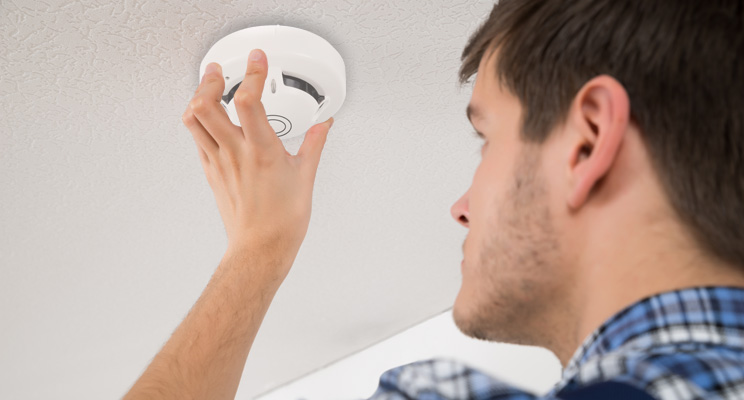Periodic maintenance of fire detection systems is very important for effective and efficient operation of the system. The EN 54-14 standard contains clauses about necessity of operation and maintenance.
WHY MAINTENANCE OF OPTICAL SMOKE DETECTORS ARE SO IMPORTANT?

Lack of periodic maintenance may result in many failures in the system. The most common problem that gives residents a hard time is false alarms. One of the most important reasons for false alarms is the disruption of periodic maintenance of optical smoke detectors, which are frequently used in fire detection systems.
Why does lack of periodic maintenance of smoke detectors cause a false alarm?
In order to answer this question, firstly, the working principle of optical smoke detectors should be considered.
How do optical smoke detectors work?
Optical smoke detectors have a photoelectric cell inside. There is a photo diode receiver and an IR Led transmitter inside this cell. Normally, when there is no fire in the room, the IR beams emitted by the IR Led transmitter do not fall on the photodiode receiver. It exits through the holes in the cover of the photoelectric cell. The cover design may vary depending on the brand and model. In the event of a fire, the beams emitted from the IR Led transmitter strike the particles formed by the fire smoke filled into the photoelectric cell and fall onto the photodiode receiver. Then the optical smoke detector detects the fire and informs the fire detection panel.
The important point here is that the beam emitted from the IR Led in the optical smoke detector strikes the “particle” density without separating smoke, steam, and dust and reaches the receiver. This detection principle is specified in the European Standard EN 54-7, which is the basis for the design of optical smoke detectors. In other words, it does not vary according to brand and model. All smoke detectors with CE label and CPR certificate designed according to EN 54-7 standard detects according to the particle density principle.
Dust, dirt, moisture, etc… particles may enter the optical smoke detectors in time. If periodic maintenance is not performed, the photoelectric cells of the smoke detectors are filled with these foreign matters. Thus, the particle density inside the optical smoke detector increases. After the particle density exceeds a certain threshold level, the IR beams emitted from the IR Led transmitter to strike these particles and reach the receiver. As a result, the detector generates a fire alarm signal. However, there is no fire. Only too many particles are present inside the detector, which leads to false alarms.

As a result, periodic maintenance of fire detection systems is required to prevent false alarms. It is especially important to clean the photoelectric cells of the smoke detectors. Optical smoke detectors with too much particulate build-up can cause false alarms. It is also important to remember that when too many false alarms occur in a system, people in the premise may not trust the fire alarm system. In the case of a real fire, if people say “It is False Alarm Anyway” and do not take actions about the event, and large-scale loss of life and property may occur.
